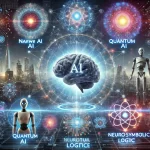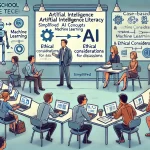
Artificial intelligence elucidates how glucose aids the SARS-CoV-2 virus
July 31, 2021A team at Blue Brain developed an artificial intelligence technology capable of reading hundreds of thousands of scientific papers, extracting knowledge, and assembling the solution – The journal Frontiers in Public Health, Clinical Diabetes, released a machine-generated perspective of the role of blood glucose levels on the severity of COVID-19 today.
In response to the COVID-19 pandemic, the COVID-19 Open Research Dataset (CORD-19) was published open access. The dataset contains over 400,000 scholarly publications, including over 150,000 with full text studies on COVID-19, SARS-CoV-2, and other coronaviruses. The CORD-19 dataset is the most comprehensive collection of coronavirus literature available for data mining to date, and the coalition behind it has challenged AI experts to apply their natural language processing and other machine learning techniques in order to generate new insights that may aid in the ongoing fight against COVID-19.
“Since early 2020, Blue Brain has been actively involved in the fight against COVID-19,” explains Prof. Henry Markram, the Blue Brain Project’s Founder and Director. “In response to this call to action, we recognised that we could leverage our Machine Learning technologies and expertise in Data and Knowledge Engineering to produce the text and data mining tools necessary to assist the medical community. Blue Brain sought to shed light on one of the most perplexing elements of the epidemic – why some people become extremely ill while others remain completely unaffected”.
Constructing and utilising text and data mining tools
Blue Brain developed and trained machine-learning algorithms to mine these documents and extract structured data from unstructured text sources. A simple study of the CORD-19v47 dataset using the text mining tools ‘Blue Brain Search’ found that the most frequently referenced biological variable was glucose metabolism.
The scientists used Blue Graph, a unifying Python framework for analysing extracted text concepts to create knowledge graphs, to create unique knowledge graphs for all findings that mentioned glucose in relation to respiratory illnesses, coronaviruses, and COVID-19. This enabled the investigation of glucose’s potential role in disease on a variety of levels, from the most superficial clinical connections to the most fundamental biochemical pathways involved in disease.
Multiple lines of evidence arose from the facts and conclusions of thousands of studies suggesting increased blood glucose levels were either caused by faulty glucose metabolism or were induced during hospitalisation, medication treatments, or IV administration. This approach demonstrated how increased glucose aids practically every stage of the viral infection, from infection beginning in the lungs to severe consequences such as Acute Respiratory Distress Syndrome, multi-organ failure, and thrombotic events.
“Subsequently, in the paper, we discuss the implications of this hypothesis and identify areas for additional research into diagnostics, treatments, and interventions that may help to mitigate the severity of COVID-19 and manage the pandemic’s public health impact,” Blue Brain’s Molecular Biologist Dr. Emmanuelle Logette explains.
The promise of open access scientific publications
“When the pandemic began, scientists promptly set to work and published over a hundred thousand papers inside a year. However, can anyone read so many documents? Is it possible for anyone to perceive and comprehend all of the patterns that emerge from this research?” Prof. Henry Markram enquires. “Fortunately, the alliance behind the CORD-19 dataset persuaded all subscription publishers to remove these papers from their paywalls and make them freely available for mining using modern machine learning and knowledge engineering technologies.”
“With access to the CORD-19 dataset, Blue Brain created an AI tool rapidly and directed it toward determining why some people get sick while others do not. Is it sufficient to state categorically that elderly adults are more vulnerable? We must ascertain why. Why do some apparently healthy individuals succumb to COVID-19? Why do so many people die in the intensive care unit? To address these problems, we told our AI to track the viral infection from the time it enters the lungs until it breaks free from the cells in the lungs and spreads throughout the body, infecting the organs,” Prof. Markram continues. “We also constructed the virus at an atomic level and created a computational model of the infection to test the findings in the literature. I believe we have identified the most plausible explanation why some people are more susceptible to illness than others,” he concludes.
For instance, the team used Blue Brain BioExplorer to illustrate the basic effects of elevated glucose in airway surface liquid on the primary phase of infection in the lung and to explain why at-risk patients are more susceptible to respiratory viruses.
Blue Brain BioExplorer was developed to recreate, visualise, explore, and detail the structure and function of the coronavirus for this study. It is open source and may be used by anyone to address critical scientific topics.
“Pioneering Simulation Neuroscience in order to gain a deeper understanding of the brain has a slew of secondary benefits,” Prof. Markram explains. “This study demonstrates how Blue Brain’s computational technologies and diverse team of specialists may be rapidly diverted to assist in a global health crisis.”
A significant advancement in science and our understanding of the brain
“The COVID-19 study also demonstrates why we believe computational techniques are critical for advancing our understanding of the brain,” Prof. Markram adds. “The issue is significantly more serious. There are many million scientific publications that one must read and comprehend in order to understand what we know about the brain. Is anyone aware of what we know? However, machines are capable of reading a large number of documents. This is why the Blue Brain has built some of the most sophisticated knowledge engineering, mathematical, and machine learning acceleration technologies available. Indeed, this resolves only a portion of the problem. Even if an AI tool could read all of these publications, we would still only understand a small fraction of what the brain contains and how it functions. However, developing model brains based on design principles enables us to attempt to complete the picture,” he concludes.
Is it ethical to restrict access to science to times of pandemic?
Prof. Markram also expressed his unhappiness with the all-too-common practise of subscription publishers encrypting scientific knowledge. “When the CORD-19 literature collection became accessible to us, Blue Brain was able to direct our technology toward COVID-19 and propose an answer to a critical question in the fight against this lethal virus. Therefore, is it appropriate to make science articles (that are publicly financed) available to the public just during a pandemic, when the same approaches may be used to address a plethora of other diseases, expedite science, and aid in the fight against climate change?”
Reference
A Machine-Generated View of the Role of Blood Glucose Levels in the Severity of COVID-19.Frontiers in Public Health.DOI: 10.3389/fpubh.2021.695139


















